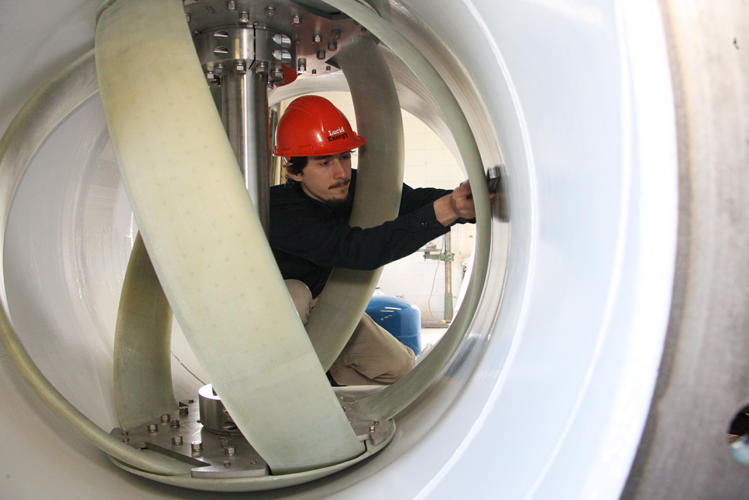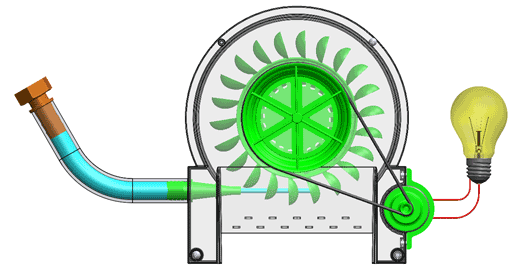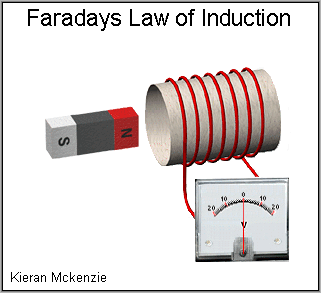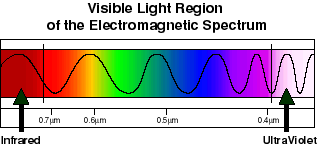
A big turbine for a big idea
Let's start with what the heck a turbine is and what it does - even if you know, you're probably not used to it looking like the above picture. Turbines rotate and generate electricity when a force pushes on them.

In this case, the turbine is directly powering a light bulb. (source)
But where does the force come from? Where does the ENERGY come from? There's a law of the universe called the law of conservation of energy - the idea of it is that energy always comes from somewhere and goes to somewhere, it's never created or 'used up.' So when we "create" electricity, we're really converting another type of energy INTO electricity, usually using a turbine of some kind.
Every power source except solar power has the same basic principles: turn a turbine, generate electricity by converting that moving energy (called 'kinetic' - everything that's in motion has kinetic energy) into electrical energy. Hydroelectric (hydro = water) turbines use the motion of water to turn the turbine, windmills use wind (uh, duh!). Coal power plants use the heat from burning coal to boil water and the steam that rises turns a turbine - it's like a created wind.

Seems pretty simple when you put it this way, right? (source)
Even nuclear energy, which seems so fancy, uses the same principals as coal - just with nuclear reactions as the heat source instead of burning coal.
Why does turning things in a circle produce electricity though? The simple answer is that the rotation moves a magnet inside of a coil of wires, which makes the electrons slide back and forth - which is all that electricity is: the movement of electrons. The names are similar for a reason!
The meter is measuring the voltage, or electric potential, created in the wire (source)
One last thing I love to point out: we've been using water and wind power since before there was electricity! Water wheels and windmills date back over 2000 years, when people built massive contraptions to convert the available energy into something useful - what do you think they powered with these devices? Use the comment section to guess!

This is an animation from Skyrim, a game that is pretty as well as pretty fun






